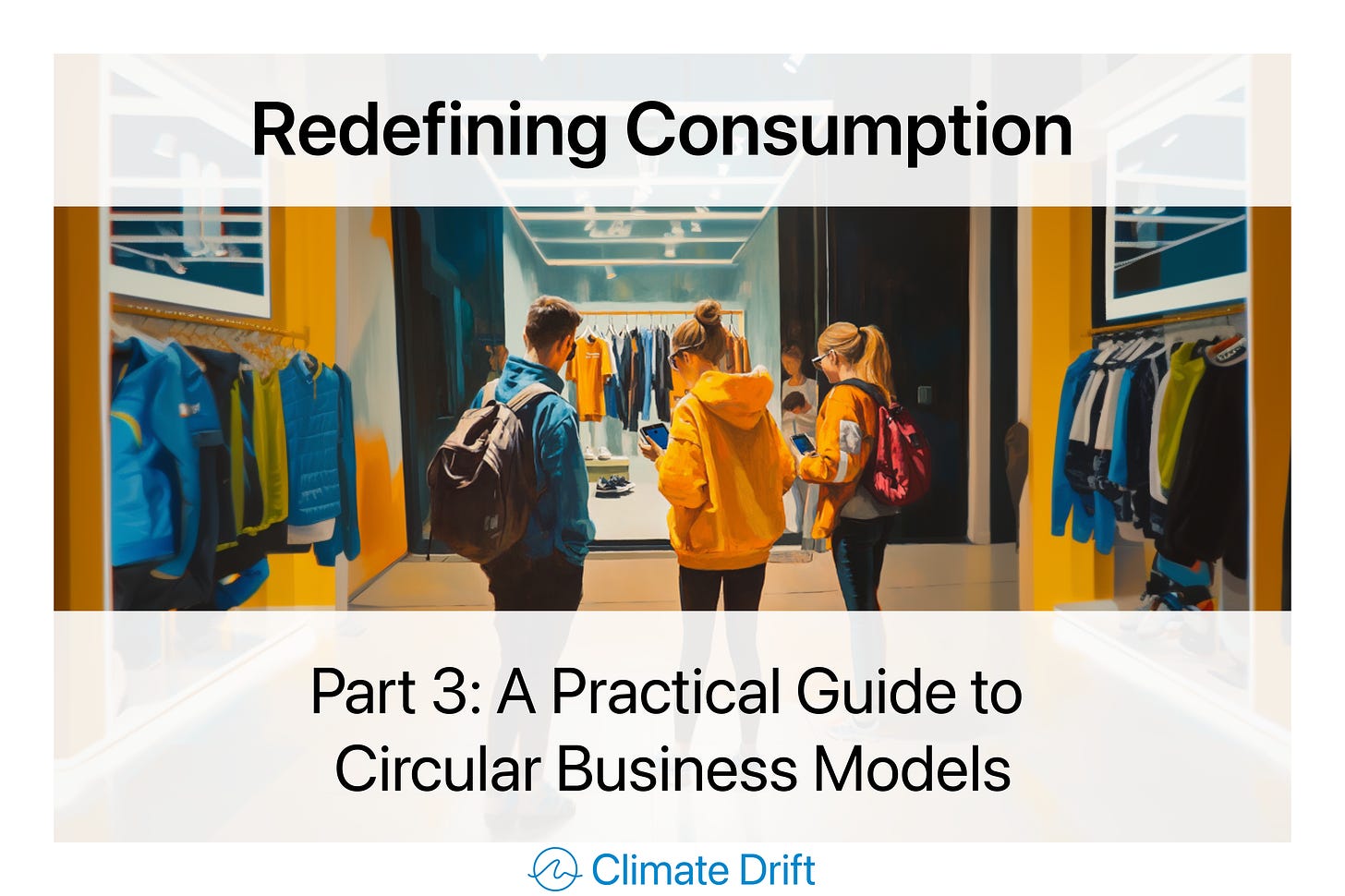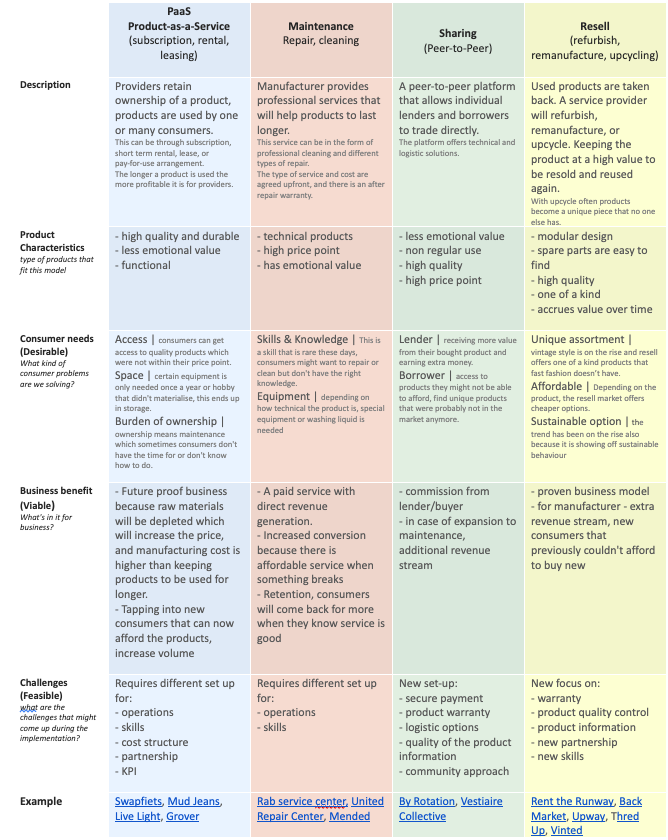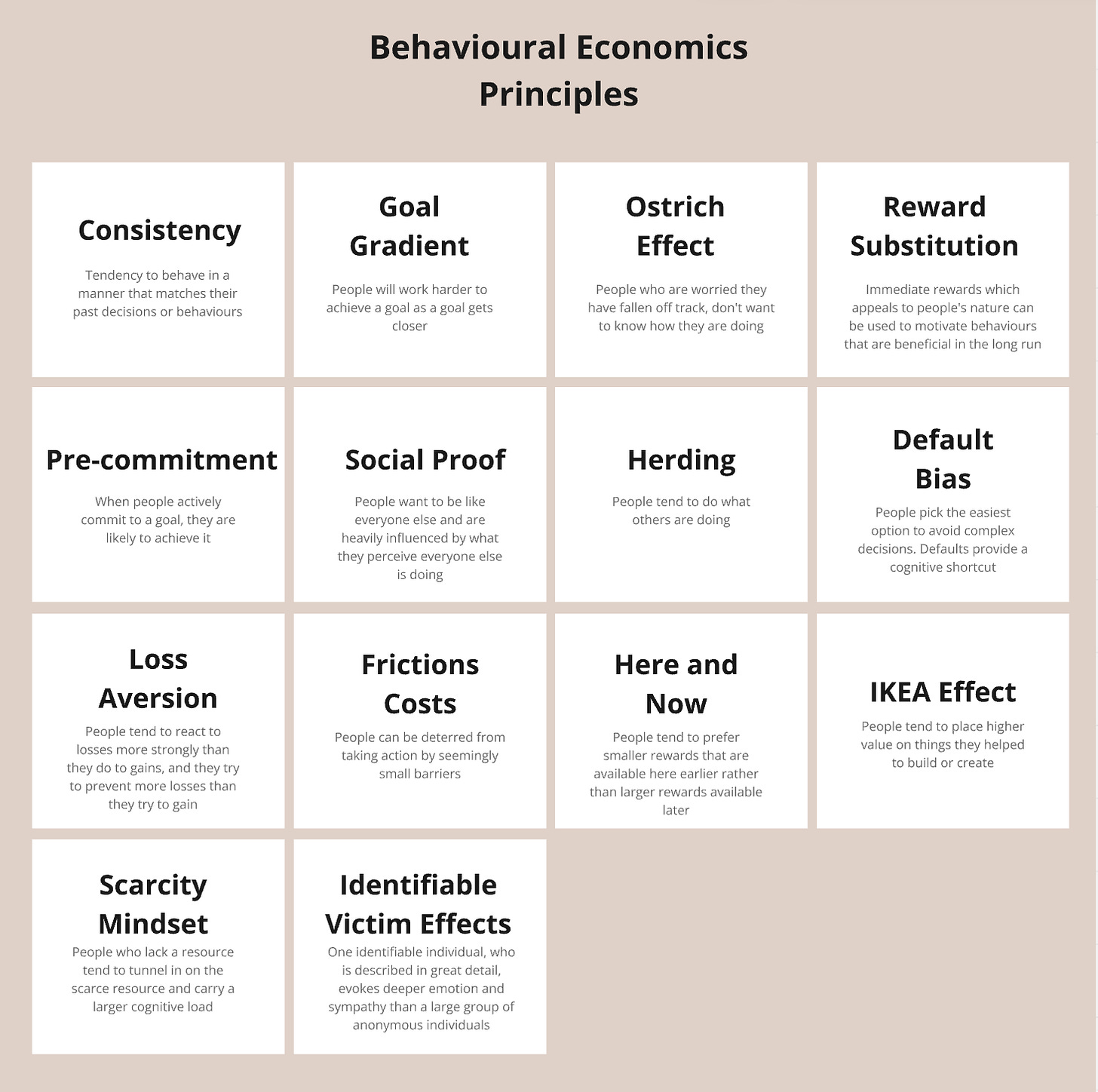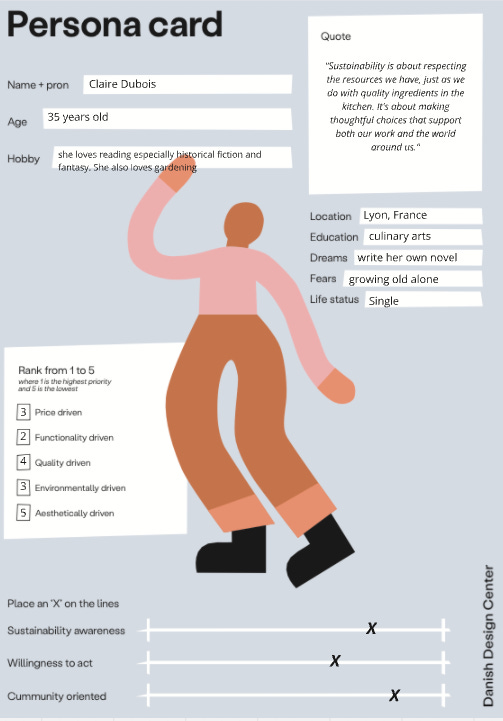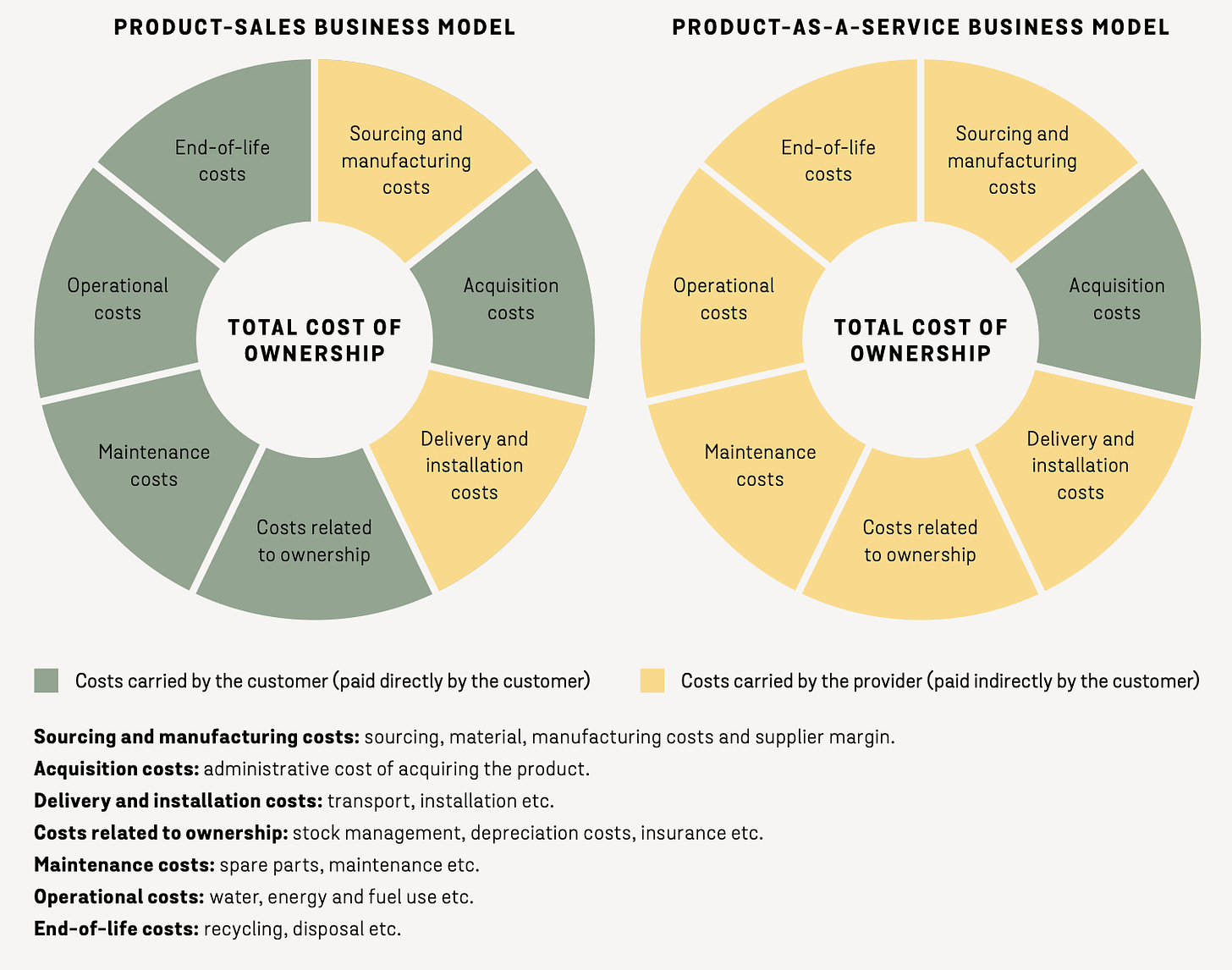Welcome to Climate Drift - the place where we dive into climate solutions and help you find your role in the race to net zero.
If you haven’t subscribed, join here:
Hey there! 👋
Skander here!
We've reached the final stretch of our circular economy journey, and it's time to roll up our sleeves and get practical. In Part 3, Nadia – our digital and e-commerce virtuoso with 15 years of experience at giants like Nike, TOMS, and adidas – is unveiling her guide to building profitable circular business models.
Get ready to dive into:
Finding your perfect circular business model
Solving real consumer problems
Restructuring costs for circular success
Closing crucial skill gaps
Launching marketing campaigns that resonate
And more!
🌊 Let's dive in
Join the Climate Drift Accelerator and turn your passion into action. We are selecting people for our next cohort now, and we're looking for talented individuals like you to make a real difference.
🚀 Apply today: Be part of the solution
Redefining Consumption - Part 3
A Practical Guide to Circular Business Models
(Click the title 👆 to read the full guide online, it’s a long one)
Hi I’m Nadia, a Digital and E-commerce leader with over 15 years of experience in sportswear and lifestyle industries, I bring a strategic mindset with a pragmatic approach to execution. My experience includes working with major brands such as Nike, TOMS, and adidas, among others. I have a deep yet comprehensive understanding of the dynamic and ever-evolving landscape of consumer behaviour, business, and technology. Driving 80% growth in corporate set up by delivering relevant consumer experience and fostering close collaboration with key stakeholders.
After developing circular services pilots, I’ve come to see the circular economy as a logical and exciting model for the future. It aligns profitability with sustainability, offering clear value to consumers—a business approach I strongly believe in. I specialise in identifying value exchanges between businesses and consumers, crafting innovative value propositions and business models that deliver creative and impactful solutions.
This is the final part of a three-part Challenge:
Part 1. Collective Action, the Key to Transition from Ownership to an Access Economy
This chapter talks about consumption as the root cause of our climate problem, and provides a framework for the next chapter. While consumption is an inevitable part of human life, we must ensure it stays within acceptable limits to protect our planet’s boundaries. Managing consumption requires a collective effort—discover your role in shaping this.
Part 2. State of the Industry through the Lens of Consumers, Business, and Government
Deep dive analysis of 5 industries current situation through the lens of consumers, business, and government using the framework outlined by the first chapter. Understanding the role they play, challenges, and best practices unique to the industry.
Part 3. Building a Circular Future: a Practical Guide to Starting a Circular Business model
A step-by-step guide on launching a profitable circular business with a clear value proposition for consumers, focusing on building a systemic approach to transform the business model.
INTRODUCTION TO PART 3 – BUILDING THE FUTURE: A PRACTICAL GUIDE TO PROFITABLE CIRCULAR BUSINESS MODELS
With increasing pressure on businesses to address both environmental and economic challenges, adopting circular business models has become essential for long-term success. This paper offers a practical guide for companies looking to transition from linear to circular operations, focusing on how to maintain profitability while transforming their business.
Starting a circular business can be daunting, whether you're a startup building a brand from scratch or a corporate piloting a new model. If you’re feeling overwhelmed by the information and checklists, you’re in the right place. My goal is to offer a clear, comprehensive starter kit. I’ve drawn inspiration from various toolkits to craft this recommendation. I believe that a truly sustainable business model is one that not only generates profit but also delivers genuine value to consumers. As a result, my recommendations place both business needs and consumer needs at their core.
Table of Content:
How to Start a Profitable Circular Business
Find the Best Circular Business Model
Solve Consumer’s Problem
Build New Cost Structure
Close the Skill Gap
Launch a Kick-ass Marketing Campaign & Seamless User Experience
Opportunities to Collaborate Beyond Industry Boundaries
Pro Tips to Set-up a Circular Team
HOW TO START A PROFITABLE CIRCULAR BUSINESS
1. Find the best Circular Business Model
There is no one-size-fits-all strategy, so finding the best model requires identifying the one that is Viable, Desirable, and Feasible for your specific business needs.
For a business to be Viable it has to have the potential to make profit over time, for this to happen it must have a solid plan on how to make money. It may take some time, but it’s essential to have a clear timeline in place.
Desirability is strongly connected to whether consumers need the product/service and how much they would pay for the value it brings to their life in comparison to competitors in the same marketplace. Understanding their behaviour toward your products/services, as well as anticipating potential frictions, will provide a solid foundation for developing effective solutions and marketing strategies.
It’s great to have a dream that everything is possible when you pour your heart into it, however the question that Feasibility asks is “at what cost?”. This question should come when prioritising ideas and choosing which business models to pursue.
There is no one size fits all for deciding which business model is the best fit, the assessment must be done case by case. Let's evaluate 4 circular business models, using the framework of Viability, Desirability and Feasibility.
After a quick analysis supported by the overview above we can make a quick assumption about which business model will fit best for your consumer and product. Create a hypothesis based on how the model will solve consumers’ problems.
The second step is to put the hypothesis into a concrete consumer persona and find out whether they would find the product/service desirable
2. Solve Consumer Problems
Follow these six steps to determine if the business model addresses consumer problems and take the crucial first step toward finding a solution.
1. Product
Now you know the characteristics of products that work best for each circular model, for this exercise choose a product that already exists in your business operation.
2. Circular Business Model
Choose only one specific business model to start with. Go through the list of Business Benefits and find a model that will provide the best outcome, and fits the product characteristics you chose on step 1.
3. Consumer persona
Having a defined consumer persona will help to imagine real-life challenges in adopting the model, find solutions, and forecast expected behaviour. If you already have a solid consumer base for the product you chose, you probably have a concrete persona in mind. It’s time to expand this persona and find out how they will respond to the new business model. The persona should consist of the following information: demographic, sustainable behaviour, and motivations. We will dive deeper during the example coming up.
4. Assumed Friction
Look at the consumer persona chosen in step 3, based on what we know about them, think of several frictions that might come up when they start embracing the new business model. Frictions are anything that prevent the persona from accomplishing a goal, and lead them to an inaction or choose an easier alternative action.
5. Behavioral Economics Principle
Select from the following BE principles to create hypotheses of how the persona might react. This step will help to indicate and ideate into possible solutions.
6. Desired Behaviour
A desired behaviour needs to be something specific that you think the persona should do at a certain time. To help frame this, ask this question: Who should do what, when?
My recommendation is to conduct this exercise with various personas and circular business models to find the one you feel most confident about before moving on to the next step.
Please refer to the illustration below for an example of a Product-as-a-Service model matched to a persona named Claire Dubois:
Product:
City Bicycle
Circular Business model:
Product-as-a-Service
Persona
Assumed Friction:
Claire needs a bike to go around the city but is scared it will be stolen
Claire doesn’t know how to fix a bike
Her budget is limited, and she doesn’t know much about bikes
BE Principle
Default Bias – Claire is overwhelmed with the amount of choices and picks the easiest option to avoid complex decisions.
Desired / Expected Behaviour
Claire should browse on google tonight about where to buy a bike in Lyon
Claire should browse on google tonight about the type of bike she needs
Claire should ask her friend at work which type of bike they use in the city
Claire should find a bike store in the city tomorrow to try out a bike
Claire should ask the bike store when she visits them on how to keep her bike safe
A thorough consumer behaviour analysis is a strong foundation to start mapping a seamless user journey and marketing strategy. This section uses the framework from Danish Design Center: The Circular Behaviour Toolkit.
3. Build New Cost Structure
Running a Circular business requires a different operation therefore it will change the cost structure of your organisation. For this exercise we continue to use PaaS as an example to compare the cost changes in linear product sales model vs. PaaS model.
The example of PaaS for city bikes is a model that has been proven and scaled by several companies, one of them being a Dutch company called Swapfiets. Swapfiets offers a monthly subscription which already includes all the costs mentioned below, as well as acquisition costs. The only thing users need to do is sign-up and agree to have the monthly fee automatically taken out from their account, the bike will be delivered to their doorstep, or they can choose to pick it up.
As illustrated by Stena Recycling below, PaaS providers bear the cost of ownership upfront, therefore it usually requires a big start-up cost.
Stena Recycling visualises below how PaaS has a higher start-up costs compared to product sales business model, however overtime the overall costs reduce since sourcing, manufacturing, and end of life costs will decrease overtime. The illustration is assuming 4 cycles of use. Of course this is an assumption without any specific product in mind, many products would have higher sourcing and manufacturing costs. The higher sourcing/manufacturing costs the more PaaS will decrease the overall cost structure overtime and become a more profitable and appealing future proof business model.
4. Close the Skill Gap
Logistic
Compared to a product sales model the logistics requirements include the time services are needed for the product, for example maintenance and taking back non-repairable products. The bigger the product the more expensive the cost is. Swapfiets provides a home repair and pick-up service with hassle free booking through the app. This requires a different logistic process to product sales model which would only deliver on the point of purchase.
Sales & Marketing
If you are a business that comes from a product sales model, the new sales & marketing team will need a different KPI to measure success in the new model. For PaaS the longer users keep the product and the longer product is passed on to the other user the more profitable the business will be. This means retention and user satisfaction should be the main KPI while acquisition and conversion should be secondary.
Service
In a linear economy, service and maintenance haven’t been the main focus, therefore most likely there is scarcity in skills available while demand is increasing with regulations coming up around repairs. Further on, continuous upskilling is needed to improve various types of repair services.
When a company or new business starts with the PaaS model it might be wise to find partners who can offer solutions before hiring for all the new roles needed to run a new business. Having digital solutions can also help with efficiency and therefore results in less labour-intensive operations. Circuly is software-as-a-service that helps manage PaaS subscriptions in one place. It includes management in subscription billing, booking appointments, product management, and reporting.
5. Launch a Kick-ass Marketing Campaign & Seamless User Experience
Once you have a good understanding of your value proposition it’s time to explore the positioning of the new business model in the market. Most consumers will consider both linear and circular options when browsing for products they need, they will most likely go for the best value and most convenient choice.
Create a marketing plan that speaks to your persona’s needs by speaking first about the value proposition rather than the sustainable angle. Identify the platforms where your persona spends most of their time, be present and invest on driving awareness and acquisition to your new business. Use the work you have done earlier on understanding the persona behaviour as a starting point of your marketing plan.
Driving conversion is just as crucial as attracting quality traffic, and an intuitive user experience plays a significant role in achieving both. Start with mapping consumer journeys across channels to identify the key touch points where consumers are ready to convert. Ensure a seamless transition between physical and digital touchpoints as consumers naturally navigate from one to the other. Lastly, remember that each persona might have different preferences. Start from understanding their motivation to map their consumer journey.
Don’t stop at conversion, help consumers build new habits from only consuming to also take care of the products by following-up when maintenance is due. Service communication is a good opportunity to build relationships and get feedback to further improve the product/service.
Opportunities to Collaborate Beyond Industry Boundaries
In the previous chapter and this one I have researched more than 40 brands and organisations across five consumer facing industries. Throughout this process I have come to realise that collaborations within and across industries are key to scaling a circular economy. Therefore, I would like to highlight a couple of opportunities:
Outdoor Industry Needs a Multi-brand Circular Business model
Within the outdoor industry each brand provides their own maintenance, PaaS pilots, and resell platform. If consumers are looking for hiking boots and would like to rent a pair, they will first need to know which brand they would like to use. The outdoor industry has valuable lessons to learn from its close neighbour, the fashion industry. An example to take from the fashion industry: for consumers looking for a secondhand party dress there are several platforms that provide peer to peer or sharing options available. They have done the job of creating a user-friendly digital platform, merchandising, and logistic solutions aggregated across brands.
Fashion and home furniture
What if IKEA could solve fashion’s overconsumption problem?
If the world stops producing more garments, we will have enough materials to keep making and reusing clothes for the next generation and more. The root cause of fashion’s unsustainable models is the way we consume fashion. Fast fashion has infiltrated our mind to need to buy every couple of weeks. We keep buying yet every morning when we look at our wardrobe we feel as if we don’t have anything to wear.
What if IKEA comes up with a wardrobe so smart, it’s capable to do the following:
analyses which clothes we use the most and which we don’t, making suggestions for different looks to mix and match
suggest the type of item we miss to create the latest look
find a re-commerce platform where it sells the exact item
identify items you don’t use for a while and tell you how much money you could earn by renting it out or selling it on re-commerce platform
finally provide a summary of your individual carbon footprint reduction
All within one ecosystem, let’s call it Wardrobe as a Service. This will solve several consumer problems such as: not having enough variety, being on top of trends, finding a circular option for the item they need, transparency and impact of their purchase, incentivized for their sustainable habit.
Using food waste to help other industries become more circular
There is an untapped opportunity to process food waste to become material for the next industry. As you can imagine we have found endless varieties of natural ingredients and each of them once consumed has its unique opportunity for the next product. Here are a couple of circular businesses that have done it right:
Food for Skin upcycles tomato peels, seed, and liquid leftover into face cream, using raspberry seed which is a byproduct of juice produced into SPF30.
Caffe inc. processes coffee by-products into coffee oil that can be used for personal care, coffee blocks for building blocks, and coffee colourants for the textile industry.
Fruitleather Rotterdam uses mango waste to become fruit leather, selling it to the footwear and accessories industry to be manufactured as shoes, wallet, and bags.
Congratulations on reaching the final part of my article! If you found it interesting, please feel free to share it with others.
Pro Tips to set up a Circular team
New Business
If you're launching a new business, integrating a circular business model is essential to ensure it’s future proof. Bring on someone who understands the circular landscape, has a strong business background, and knows how to create a compelling value proposition for consumers.
Corporate exploring circularity
In EU circularity is no longer a choice, every company will have to comply. However there are competitive advantages for businesses to go beyond what the regulation asks.
What should you do:
Start planning ahead and integrate circularity into your long term strategy
Invest and build a team to explore the right business models and start piloting
Integrate the circular team into the business innovation department to maximise their success in scaling the pilot
Bring in talent that has a strong business background, understand the circular landscape, and knows how to create a compelling value proposition for consumers
Corporate scaling circularity
Make sure circularity is part of long term business target and KPIs, eg. percentage of business revenue should come from circular business
Build dedicated team to scale circularity within the business organisation, this team should understand the business well and identify further opportunities and optimisation
Seek collaboration beyond industry boundaries
If you’re ready to explore the opportunities in circularity and find the tips above resonate with you, let’s connect—I’d be thrilled to help!





